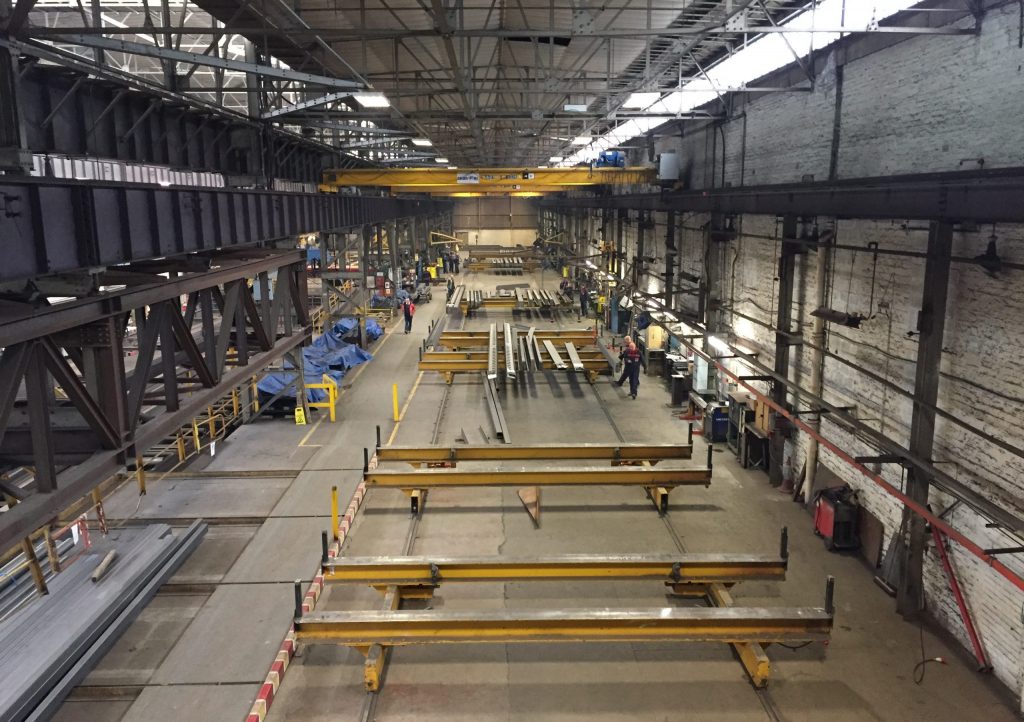Keeping our distance and reducing our visits are now the ‘new normal’. Which could turn out to be a good thing for the construction sector.
They are both a way of working that are increasingly recognised as bringing quality and cost benefits to construction projects. Reducing on-site operations by managing many elements of the building process off-site, in controlled environments such as specialist factories and manufacturing facilities, can deliver significant cost and time improvements for contractors seeking quality outcomes.
This is something which can be readily delivered by a steelwork contractor. In fact, steel has long been recognized as the ‘original’ off-site framing material.
There are a number of elements of steel fabrication which can be managed off-site as a manufacturing process. This begins with digital design, allowing for precise components and minimal waste, before completing welding, painting and treating steelwork with fire protective coatings and finally pre-assembling some parts. The structure can then, if required and time or space allows, be fully pre-assembled to ensure an efficient and perfect fit ready for site.
Handling the majority of structural framing in a controlled environment in this away allows for improved quality assurance, ensuring high standards of work from the same contractor.
This modern method of construction (MMC) also reduces costs at build stage, negating the need for additional sub-trades to complete elements of the work on-site. Reducing the number of trades on-site ensures a site can continue adhering to government guidelines on social distancing and also work within the limitations of the sector’s skills shortage. Off-site manufacturing also helps with timings and predictability, as factory-based processes aren’t at the mercy of cold, wet weather as construction sites can be. Similarly, off-site work allows for parallel operations between factories and construction sites. And for neighbouring communities, there will be the benefits of fewer wagon movements, contributing to a build’s overall social responsibility.
Admittedly there are some cost implications to off-site manufacturing in this way, for handling, transportation and craneage or erection, but this just requires good logistics and is quickly balanced by the higher quality achieved by factory pre-fabrication, particularly for welding.
For it to really work, off-site elements must be incorporated into the design by architects and sub-contractors’ designers. Architects can take structural layout and sizes or placements of parts of the steel fabrication into account for the steelwork contractor to then provide further information ahead of steel being ordered. Maintaining the rolling and fabricating process in a steelwork contractor’s own factories then allows for any changes to be more easily made, within a controlled environment.
Understanding the many elements of the fabrication process also helps to demonstrate the value of having these all take place in the same place, by the same contractor; from cutting and chamfering pieces to detailing connections or attachments and drilling in holes, then welding ready for said connections or attachments when components get to site. Steel is then cleaned, prepped and treated or protected and any secondary components added.
Steelwork contractors offering these capabilities are indebted to the developers of fabrication machinery and committed, highly skilled staff who make these processes so precise – and of course the business leaders with the foresight to invest in said technologies and staff.
Requiring these ways of working of contractors can help a project to improve its pre-manufactured value (PMV) – the percentage of a build that is pre-manufactured then brought to site for assembly.
The need to increase off-site manufacturing, alongside other modern methods of working, is something being mapped out by the Construction Leadership Council as part of its push for “transformational” changes in the industry. It calls for more projects to incorporate off-site techniques, with factory-led production being a key tenet of MMC.
Leading by example, a number of government departments are already committing to or completing projects involving off-site work in controlled environments. The Department for Health is working towards using modular methods for the design of new hospitals – its swiftly-built Nightingale hospitals showed the potential and practicalities of off-site, modular projects. And in the Ministry of Justice prisoners have been manufacturing components for modular homes within prisons for some years.
The circumstances that have been created in 2020, alongside shining examples like the Nightingale hospitals, are likely to mean off-site construction is no longer just recognised as beneficial, but also fully utilised.
Contractors able to manage most of their work off-site, in a controlled environment, can reduce time and costs while delivering consistent quality assurance.

